Vote for the Wildlife Photographer of the Year People's Choice Award
Which one of these 24 stunning animal pictures should win the Wildlife Photographer of the Year People's Choice Award?
You can help to choose a winner of a world-renowned photography competition by voting in the Wildlife Photographer of the Year People's Choice Award.
You can can choose from these 24 images (sorted alphabetically by photographer's surname), pre-selected by the Natural History Museum from almost 50,000 submissions from 92 countries. Which one captures your imagination? Once you've decided the one you like best, head to https://www.nhm.ac.uk/visit/wpy/community/peoples-choice/2017/index.html and vote for it. You have until 5 February 2018 to make up your mind, but choose carefully, as you have just one vote.
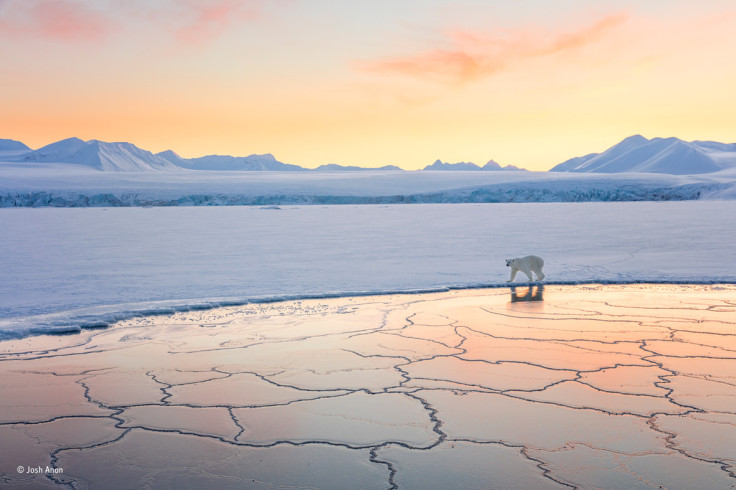
Josh Anon, USA: Land of snow and ice. The Arctic is beautiful all year-round, but in the late winter, when temperatures reach -30˚C (-22˚F) and everything is white and the sun stays low on the horizon, it's stunning. Josh was on a boat in a fjord across from Longyearbyen, Svalbard, Norway, and encountered this polar bear walking along the edge of the ice. She was curious, walking past the boat twice – just long enough for Josh to take a shot with her white coat glowing in the setting sun. After satisfying her curiosity, she silently walked off into the distance. Canon EOS 5DS R + 24–70mm f2.8 lens at 50mm; 1/80 sec at f8 (+1 e/v); ISO 160.

Adriana Basques, Brazil/USA: Hammerhead. Scalloped hammerhead sharks are generally found in the deep waters off Cocos Island, Costa Rica, where the currents are often fierce and the visibility unpredictable. It can be a tough dive with a big camera. Adriana had the advantage of a sunny day and good visibility with ample natural lighting. When a school of cottonmouth jacks came into view she waited to see if a hammerhead might appear. It didn't take long. This particular shark stayed just long enough for her to capture a full frame with the school of cottonmouths in the background, giving her the unique composition she had been searching for. Canon EOS 5D Mark III + 16–35mm f2.8 lens; 1/160 sec at f5; ISO 640; Aquatica housing; Aquatica glass megadome.
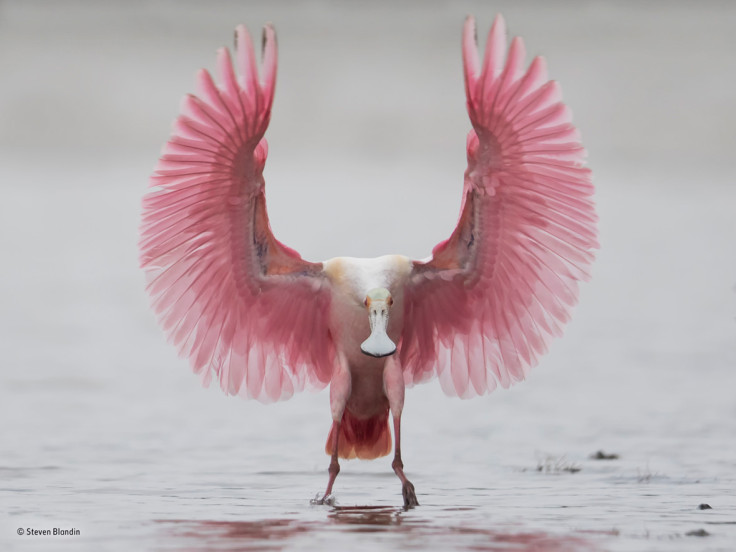
Steve Blandin, USA: Reach for the sky. Steven was taking pictures of a small group of adult roseate spoonbills in a rookery in Tampa Bay, Florida, when he noticed a newcomer flying in from afar. With just enough time to back up a few steps, Steven photographed the bird landing exactly square to his camera with its wings in a stunning symmetrical U-shape. Canon EOS 7D Mark II + 600mm f4 lens; 1/2500 sec at f4; ISO 1000.
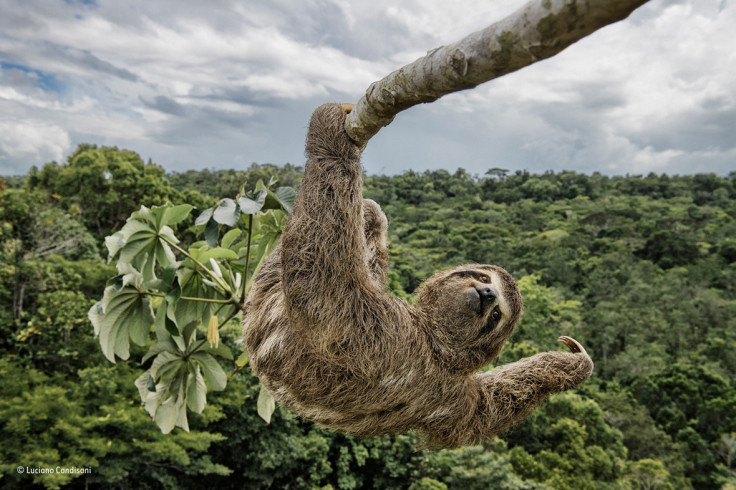
Luciano Candisani, Brazil: Sloth hanging out. Luciano had to climb the cecropia tree, in the protected Atlantic rainforest of southern Bahia, Brazil, to take an eye-level shot of this three-toed sloth. Sloths like to feed on the leaves of these trees, and so they are often seen high up in the canopy. Nikon D800 + 24-70mm f2.8 lens; 1/800 sec at f11; ISO 640.
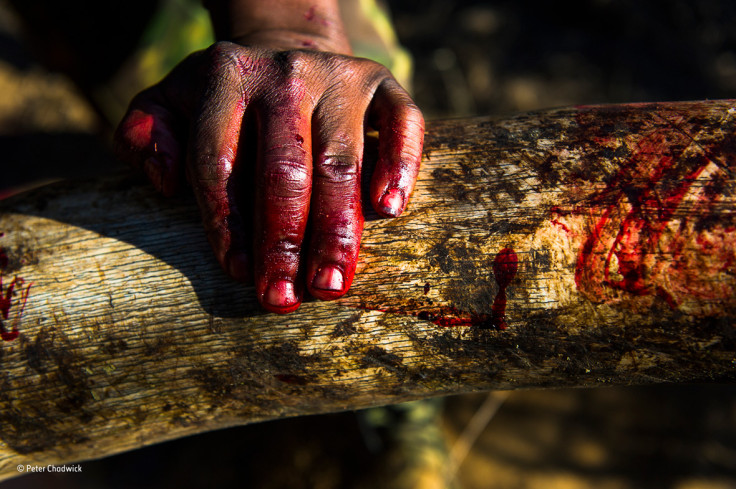
Peter Chadwick, South Africa: Bloody ivory. In a protected area of Zululand, KwaZulu-Natal, South Africa, a ranger's bloody hand rests on a heavily grained ivory tusk, also covered in the blood of an African elephant. The bull had to be destroyed due to a severe tusk infection that couldn't be treated. The tusks were removed to a place of safekeeping, where they were carefully catalogued in accordance with legislation. Nikon D3S + Nikon 24–70mm f2.8 lens; 1/2000 sec at f4; ISO 200.
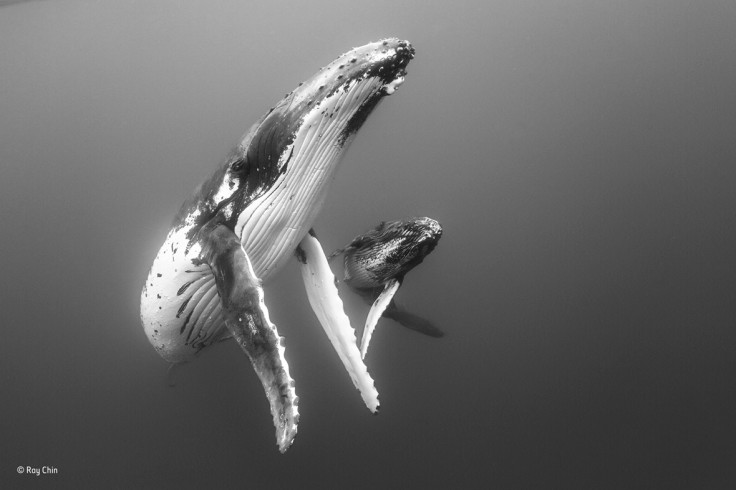
Ray Chin, Taiwan: Elegant mother and calf. Every year from July to late October southern humpback whales migrate north from their Antarctic feeding grounds to give birth in the warm sheltered waters off Tonga. Ray encountered this humpback mother and calf peacefully floating in the plankton-filled water around the island group of Vava'u, Tonga. After Ray gently approached them, the giants swam a bit closer to have a look at him. While they made this elegant turn, Ray took the shot. He later converted the image into black and white which he felt represented the simplicity of the scene. Canon EOS 5D Mark III + 16–35mm f4 lens; 1/100 sec at f6.3; ISO 250.

Alan Chung, USA: Kick back and chill. After more than two hours hiking with rangers in Volcanoes National Park, Rwanda, Alan came across the 'Hirwa' family group (meaning 'the lucky one'). This group of 16 mountain gorillas is led by a single strong silverback. They were feeding on young bamboo shoots and relaxing in a leafy open spot. Lucky for Alan indeed! Nikon D800E + Nikkor 80–400mm f4.5–5.6 lens; 1/250 sec at f11; ISO 800.
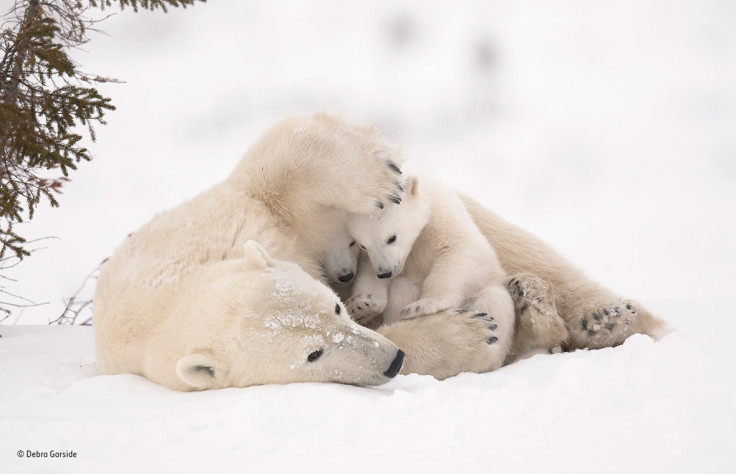
Debra Garside, Canada: Warm embrace. When polar bear mothers and cubs emerge from their dens in the early spring, the cubs stay close to their mothers for warmth and protection. Once the cubs are strong and confident enough, they make the trek to the sea ice with their mother so that she can resume hunting for seals. Debra waited six days near the den of this family, in Wapusk National Park, Manitoba, Canada, before they finally emerged. In the most challenging conditions she has ever faced, temperatures ranged from -35˚C (-31˚F) to -55˚C (-67˚F) with high winds, making it almost impossible to avoid frostbite and keep her camera gear functioning properly. Nikon D4 + 800mm f5.6 lens; 1/2500 sec at f5.6; ISO 2000.
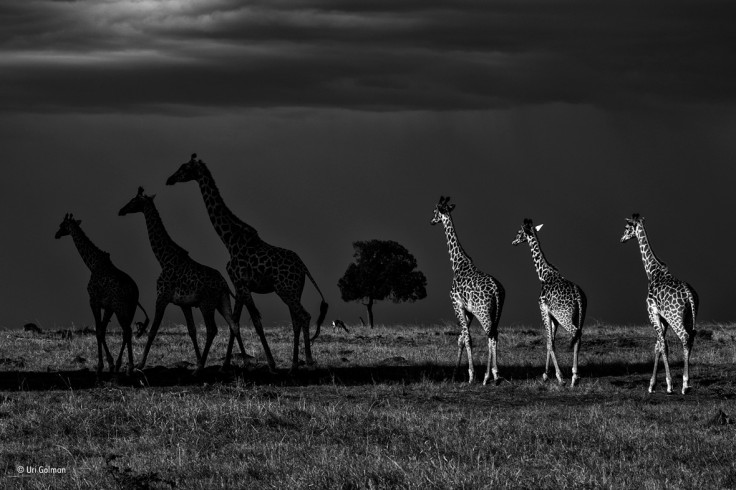
Uri Golman, Denmark: Dark side of the plains. Uri had dedicated a whole week to black-and-white photography on the plains of the Maasai Mara National Reserve, Kenya, and had spent many days taking pictures of big cats. After a long day he suddenly came across six giraffes walking in formation. He decided to follow them for a while, and when three broke off and headed into the shadows he got this remarkable shot. Canon EOS-1DX Mark II + Canon 70–200mm f2.8 lens at 180mm; 1/250 sec at f16; ISO 200.
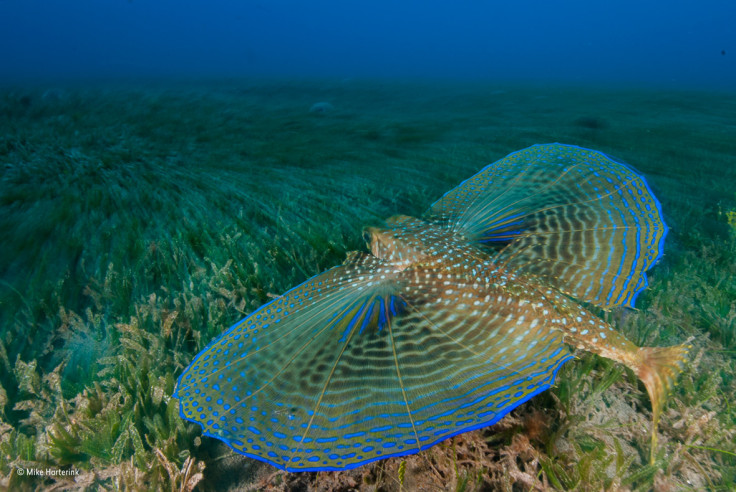
Mike Harterink, The Netherlands: Warning wings. Diving off Blue Bead Hole, St Eustatius, Caribbean, Mike used a slow shutter speed to capture the motion of this 'flying' gurnard. The fish's large pectoral fins are divided into a shorter forward fin with spines, which it uses to 'walk' around and to poke the ocean floor for food, and a larger wing-like part. The fins are usually held against its body but, when threatened, the fish expands them to scare away predators. Nikon D200 + 12–24mm f1.4 lens at 12mm; 1/8 sec at f22; ISO 100; Seacam housing; two Seacam flashes.
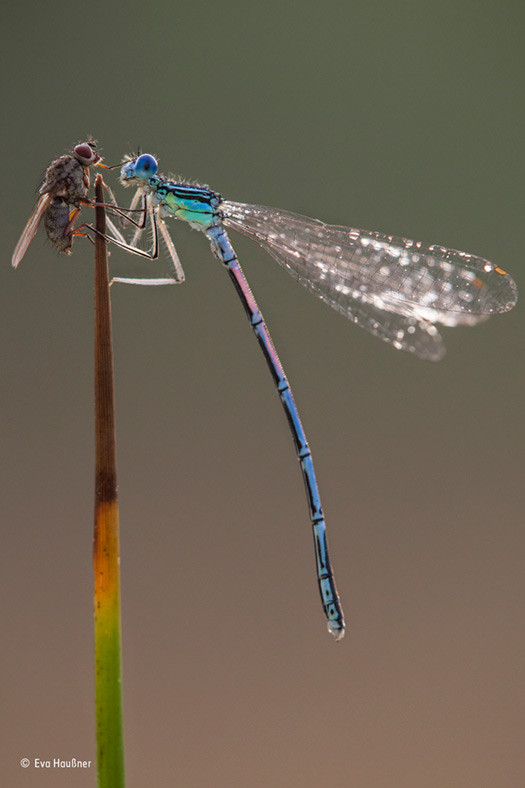
Eva Haußner, Germany: Beauty and the beast. Eva was trying to get the perfect shot of this unbelievably colourful blue featherleg dragonfly in Bad Alexandersbad, Bavaria, Germany, when suddenly a fly appeared. It clung to the dragonfly briefly before flying off, but luckily returned and gave her this unusual photo opportunity. Canon EOS 5D Mark II + 180mm f3.5 lens; 1/640 sec at f5.6; ISO 1600.
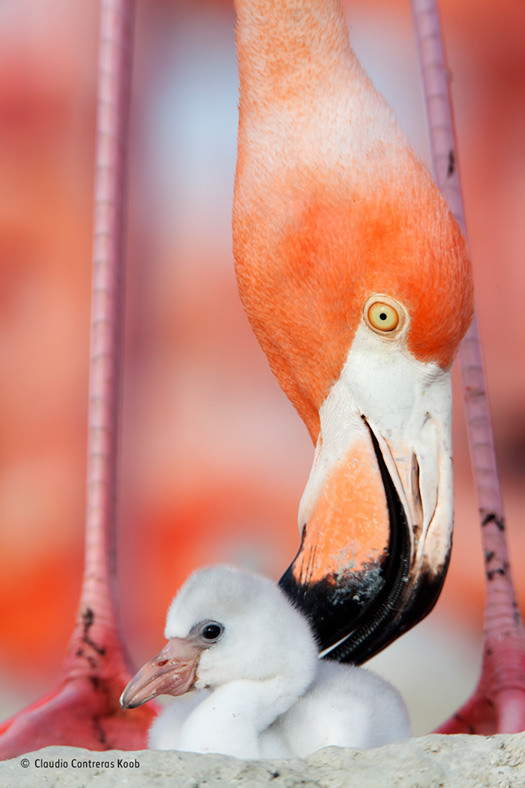
Claudio Contreras Koob, Mexico: Grooming the descendant. This fluffy Caribbean flamingo chick is less than five days old and is being preened by one of its parents in the Ría Lagartos Biosphere Reserve, Yucatán, Mexico. Chicks remain in the nest for less than a week; they then wander around the colony in crèches and start to feed for themselves, although their parents still continue to feed them for several months. The flamingo colony is highly sensitive to human presence, so Claudio could only approach the colony on all fours while hiding underneath a camo throw-over. Canon EOS 5D Mark II + EF 300mm f2.8 lens + x2 extender; 1/500 sec at f9; ISO 800; camo throw-over blanket.
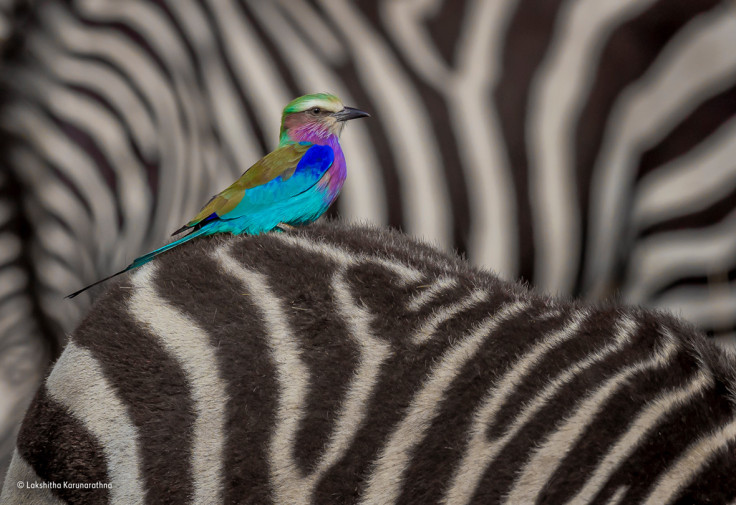
Lakshitha Karunarathna, Sri Lanka: Roller rider. Lakshitha was on safari in Maasai Mara National Reserve, Kenya, when he spotted an unusual sight – a lilac-breasted roller riding a zebra. Normally they prefer to perch high up in the foliage, but this roller spent an hour or more riding around and enjoying the occasional insect meal. Lakshitha waited for the surrounding zebras to form the perfect background before taking this tight crop. Canon EOS 5DS R + 600mm f4 lens; 1/1250 sec at f7.1 (-0.67 e/v); ISO 125.

Jan Kolbe, South Africa: What are you looking at?. Jan spotted this small southern whitefaced owl in a tree at a campsite in the Kgalagadi Transfrontier Park, South Africa. These owls have black-tipped 'ear' tufts and usually lay their eggs in the old nests of other birds. Jan was able to frame a shot of this striking bird looking down at him as it didn't seem bothered by the comings and goings of the campsite. Canon EOS 7D + EF100-400mm f/4.5-5.6L IS USM lens; 1/250 sec at f10 ; ISO 400; Canon EOS 7D flash.
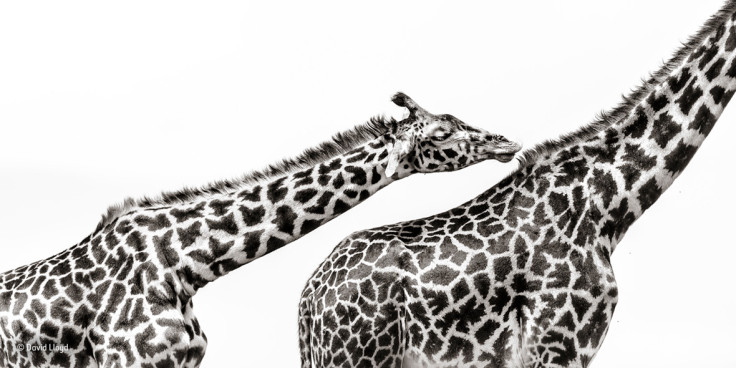
David Lloyd, New Zealand/UK: Neck and neck. Sometimes photographing large animals in isolation from their background can be difficult, especially if the background is too detailed. Luckily, David managed to capture the giraffes of Kenya's Maasai Mara National Reserve against a white, overcast sky, but he still opted to shoot a little closer and, adjusting the exposure, caught the intimate moment of a giraffe grooming its companion. Nikon D800E + 400mm f2.8 lens; 1/1000 sec at f3.2, ISO 100.
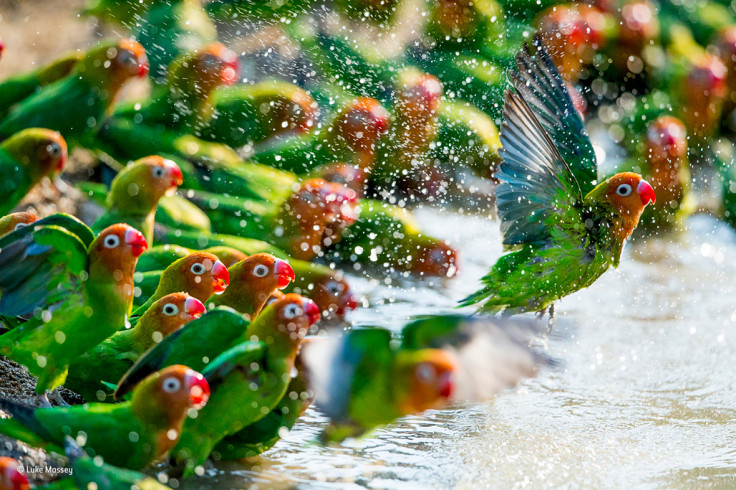
Luke Massey, UK: Pool party. As the drought in Zambia's South Luangwa National Park stretched on, the waterholes dwindled to pools. Flocks of Lilian's lovebirds congregated together and when the coast was clear they descended to this pool. They shuffled forward, taking it in turns to drink and bathe, as if on a conveyor belt. Canon EOS-1DX + Canon 500mm f4 lens + 1.4x extender; 1/4000 sec at f5.6; ISO 1600.
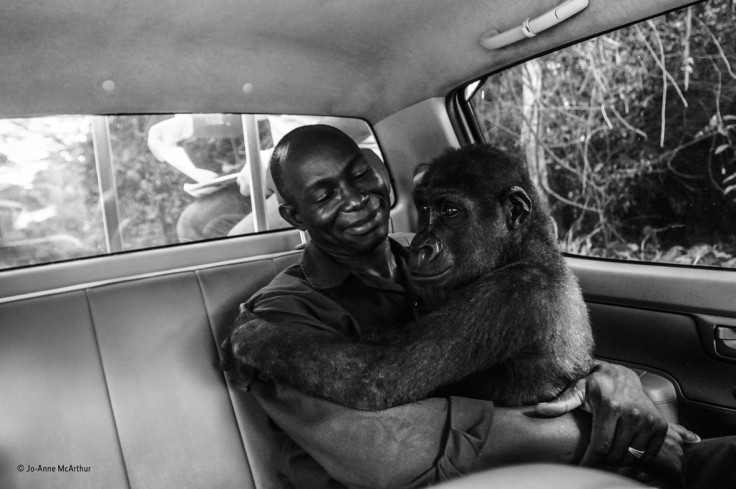
Jo-Anne McArthur, Canada: Pikin and Appolinaire. Pikin, a lowland gorilla, had been captured and was going to be sold for bushmeat but was rescued by Ape Action Africa. Jo-Anne took this photograph as the gorilla was being moved from her former enclosure within a safe forest sanctuary in Cameroon to a new and larger one, along with a group of gorilla companions. She was first sedated, but during the transfer to the new enclosure she awoke. Luckily, she was not only very drowsy, but she was also in the arms of her caretaker, Appolinaire Ndohoudou, and so she remained calm for the duration of the bumpy drive. Nikon D300 + Nikon 17–35mm f2.8 lens at 25mm; 1/100 sec at f3.2; ISO 1250.
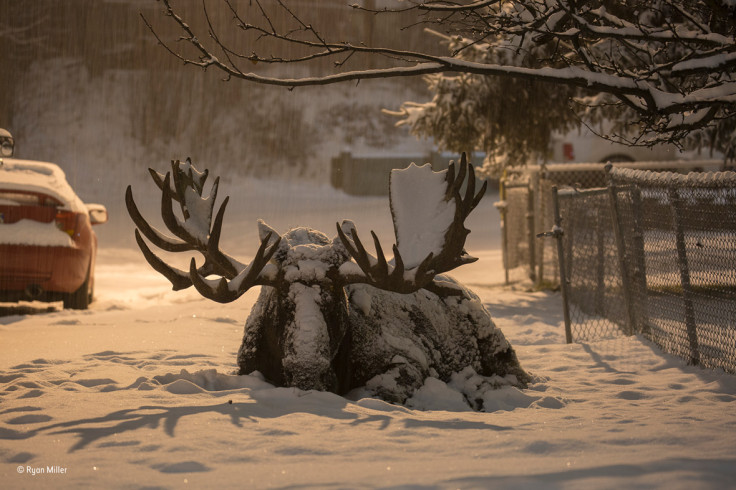
Ryan Miller, USA: Settled in. Moose are not strangers to the city of Anchorage, Alaska. This big bull is known as Hook, and Ryan knew from the previous year that he would be shedding his magnificent antler crown in the coming days. Ryan captured this scene in heavy snowfall as the rest of the city slept, and less than an hour later Hook shed his first antler. Canon EOS 5D Mark III + 100–400mm lens at 135mm; 1/6sec at f5; ISO 2000.
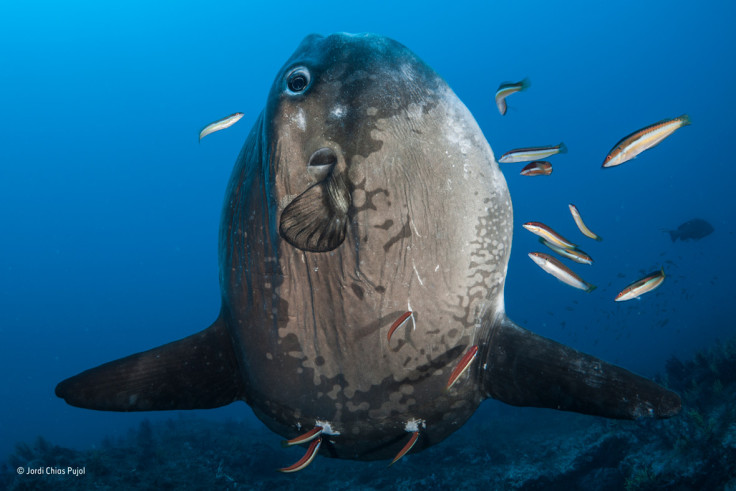
Jordi Chias Pujol, Spain: Cleaning session. The protected waters around Carall Bernat, Medes Islands, Spain, are admired for their marine diversity and are popular with divers. Jordi knows of an area where sunfish visit in the spring to be cleaned by Mediterranean rainbow wrasses and other small wrasses. The sunfish adopt an upright position, signalling to the wrasses that they are ready. Jordi was able to approach and take a shot while the wrasses picked off the skin parasites that the sunfish are commonly afflicted with. Panasonic Lumix GF1+ Panasonic Lumix 8mm lens; 1/40 sec at f8; ISO 100; two Inon strobes.
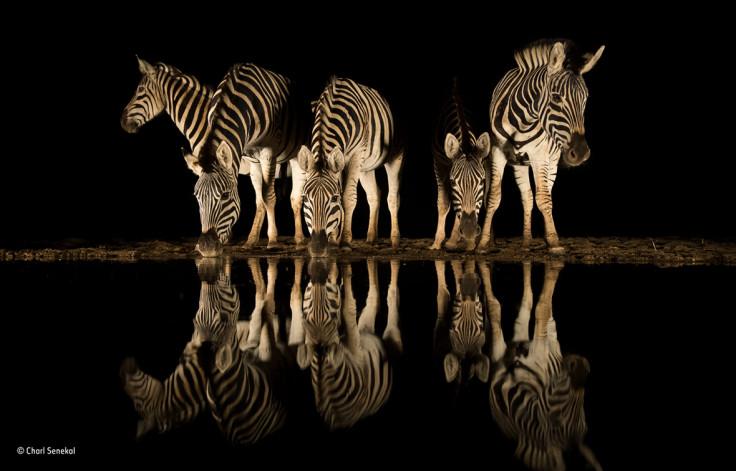
Charl Senekal, South Africa: The nightcap. For Charl, nothing beats the excitement and anticipation of sitting in wait at a waterhole during the dry season, knowing that anything can appear out of the darkness. The herd of zebra in South Africa's Zimanga Game Reserve surpassed his wildest wishes, and the still conditions resulted in a near-perfect reflection. Nikon D5 + 24–70mm f2.8 lens at 38mm; 1/400 sec at f2.8; ISO 5000.
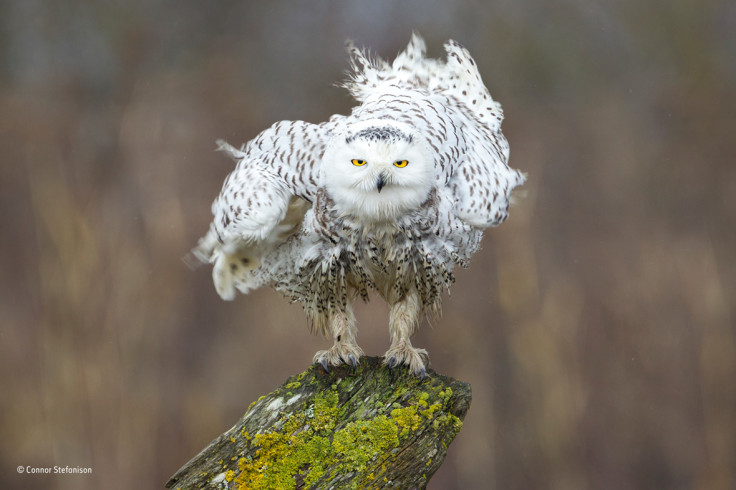
Connor Stefanison, Canada: Shaking off. Approximately every five years an eruption of snowy owls makes its way down from the Arctic, where they breed, to the Pacific Northwest of North America, and congregates in areas like Delta, British Columbia. Connor captured this owl head-on as it was shaking off its feathers on a rainy winter day. Canon EOS-1D Mark III; 500mm f4 lens; 1/200 sec at f7.1 (-1/3 e/v); ISO 200; Beanbag from car.
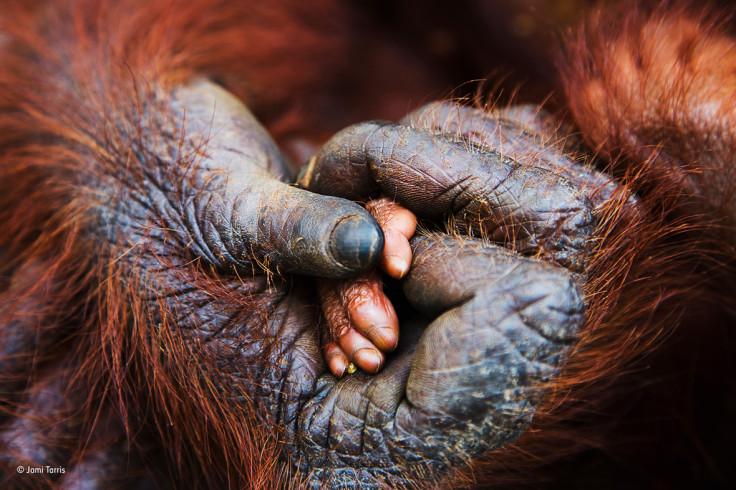
Jami Tarris, UK: Holding on. This close-up captures the touching moment an infant lays its small hand in the big hand of its mother. Jami took this photograph while she was in Borneo working on a story about the effects of palm-oil agriculture on orangutan habitat. Loss of primary rainforest is a serious threat to this already critically endangered species. Canon EOS 1DS Mark III + Canon 24–105mm f4 lens; 1/250 sec at f5; ISO 400.
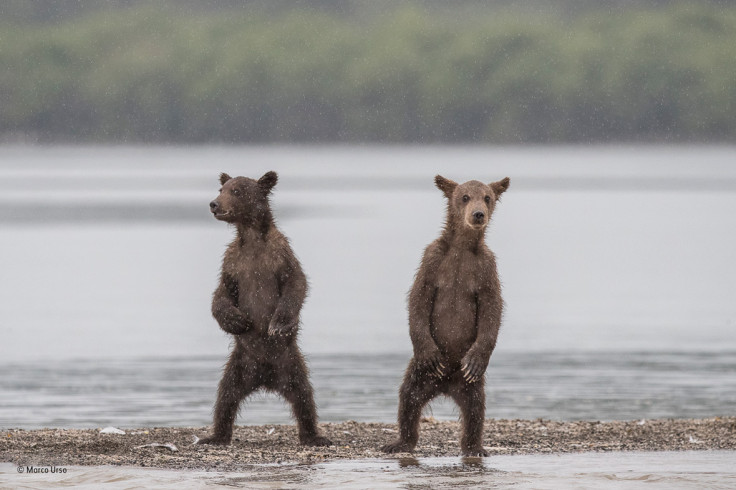
Marco Urso, Italy: The brothers. Millions of salmon spawn each year at Kuril Lake in the southern part of the Kamchatka Peninsula, Russia, attracting large numbers of brown bears. Marco noticed how curious these two brown bears were and was able to capture the moment when they both stood up on their hind legs to watch what he was doing. The rain falling onto the lake added an extra atmosphere to the scene. Fujifilm X-T2 + 50/140 mm lens; 1/500 sec at f8; ISO 800.
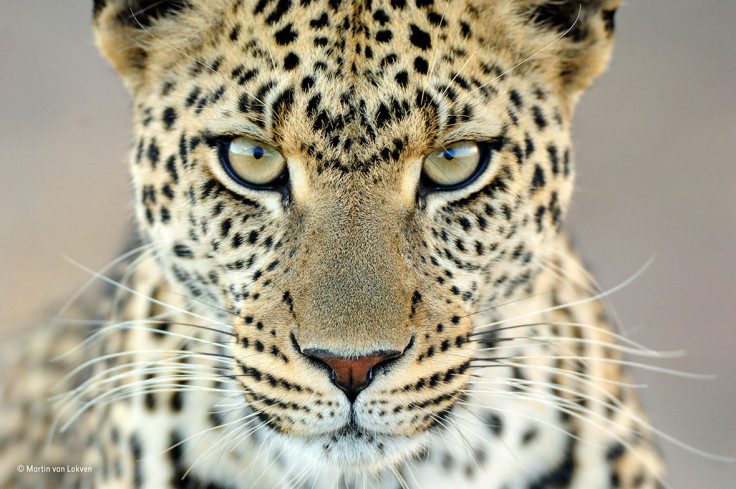
Martin van Lokven, The Netherlands: Leopard gaze. During a three-week stay in Serengeti National Park, Tanzania, Martin encountered this female leopard several times. Called Fundi by local guides, she was well known in the area. Late one afternoon, Fundi left the tree she was resting in and stopped by Martin's car, fixing him with her magnificent gaze. Nikon D2X + 500mm f4 lens; 1/125 sec at f5.6 (-0.7 e/v); ISO 400; beanbag.
So, which one was your favourite? Vote for it in the People's Choice Award at https://www.nhm.ac.uk/visit/wpy/community/peoples-choice/2017/index.html before 12pm (GMT) on 5 February 2018.
Shortlisted images are currently on display at the highly-acclaimed Wildlife Photographer of the Year exhibition at the Natural History Museum in London, until the vote closes on 5 February 2018. The winner of the vote will then be showcased until the exhibition closes on 28 May 2018. The top five People's Choice Award images will also be displayed online at www.wildlifephotographeroftheyear.com, joining the 100-strong winning portfolio chosen by the panel of judges.
Wildlife Photographer of the Year is the longest-running and most prestigious competition of its kind. The competition is a vital part of the Natural History Museum's mission to inspire a love for the natural world and unlock answers to the big issues facing humanity and the planet. Seen by millions of people all over the world, the awarded images shine a spotlight on nature photography as an art form, whilst reminding us of the urgent need to protect our planet and the species we share it with.






















